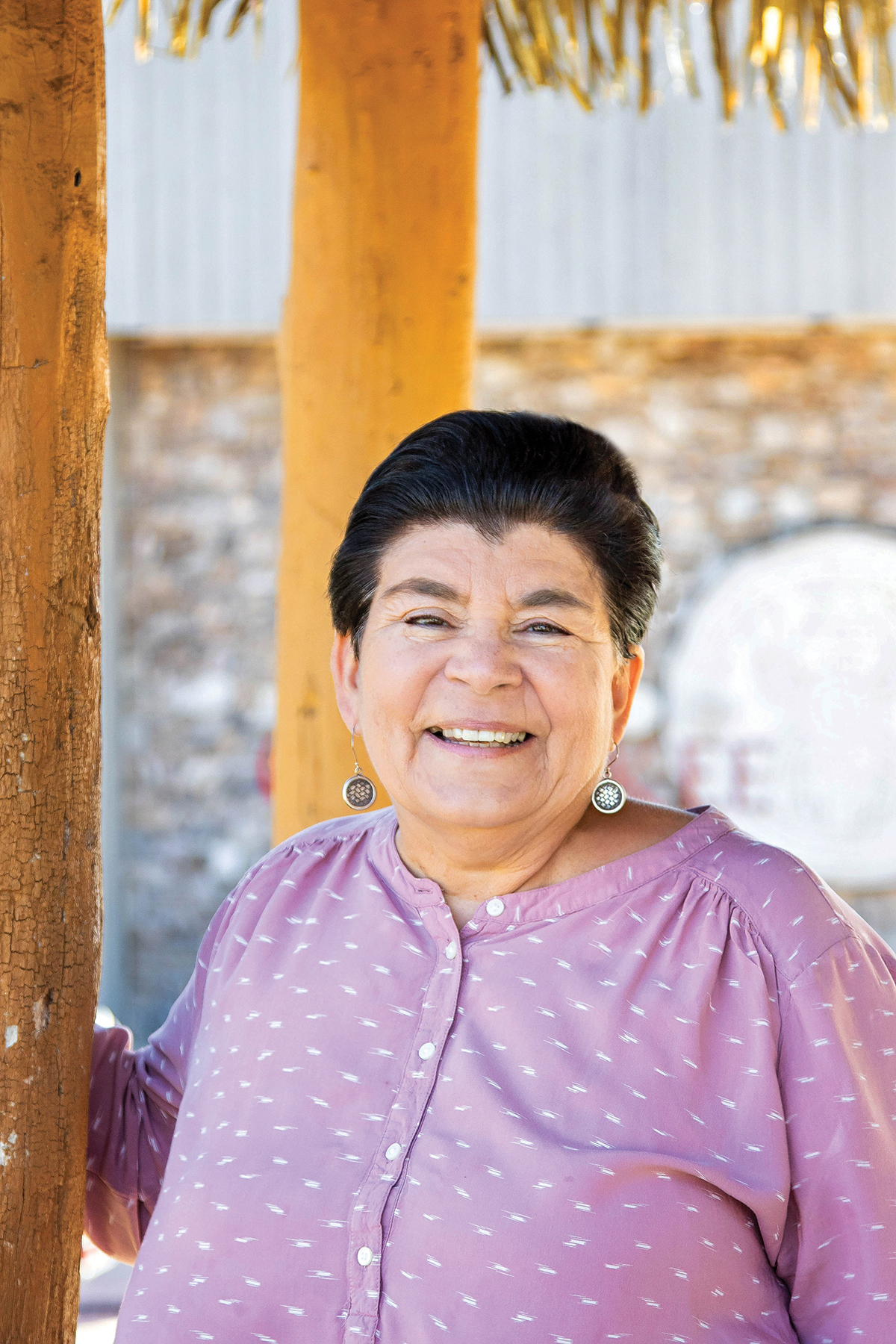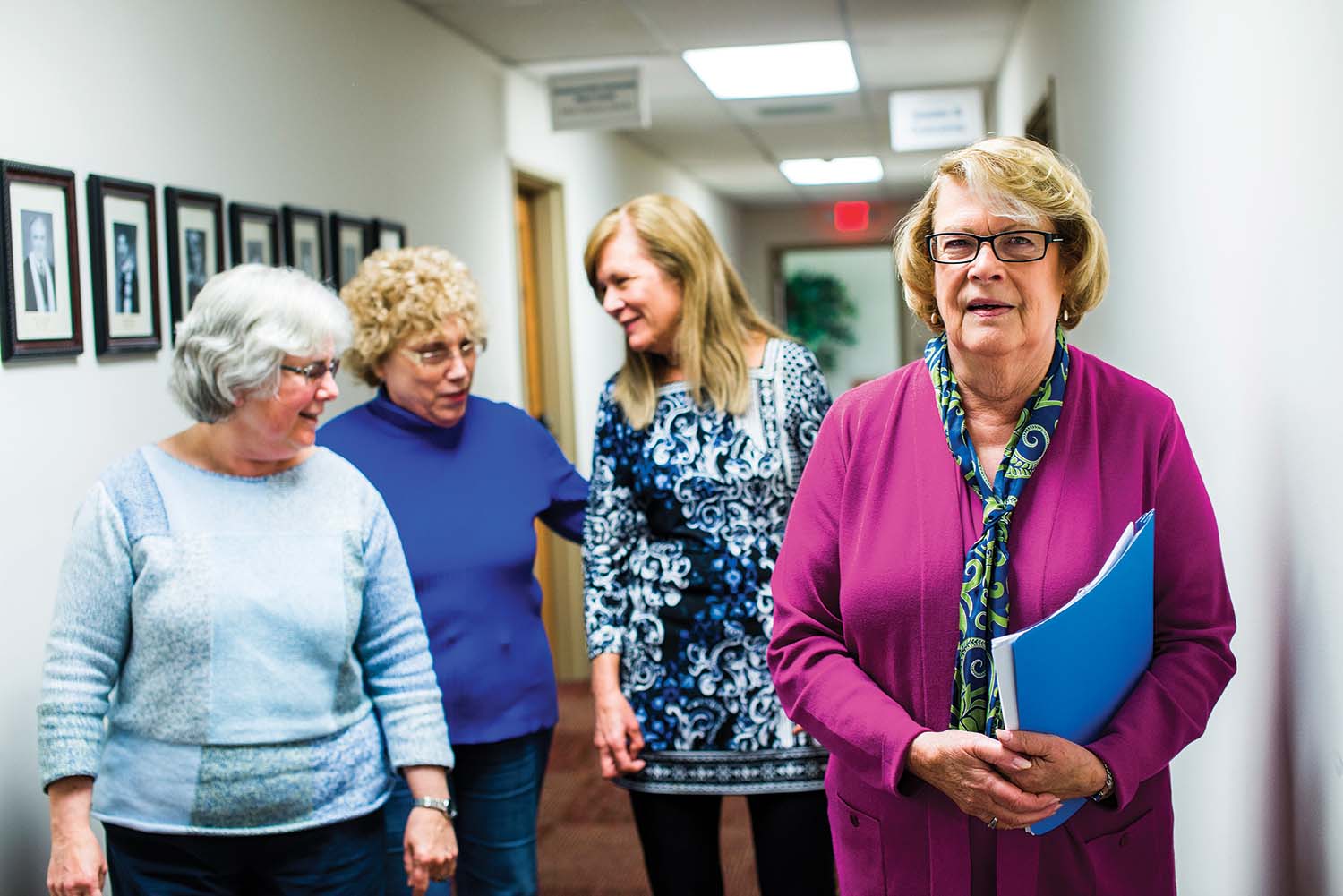
Members of the Hendersonville Swing Band at rehearsal. Photo by Tim Robison.
When Jerry Zink was growing up in Tulsa, Oklahoma, in the 1930s, there was always music. And not just any music, but Big Band music — that brassy, percussive swing that came to define mid-20th-century American popular culture. “All my memories of the Big Bands are from what I heard on the radio, which was on most of the time in our house,” Zink recalled in a recent interview. “We never had a record player at home, but I worked in a record store part-time and I’d get to play some of the band records there.” Zink’s favorite at the time was the Stan Kenton Orchestra: “He was doing things we hadn’t heard before.”
Now, nearly eight decades later, Zink will take the bandstand for the Hendersonville Swing Band’s 20th-anniversary concert this month at Trinity Presbyterian Church. Zink has been a member of the 17-piece band since the mid-1990s, when it was known as the Stardusters, and assumed the baton soon after.
Zink played, and still plays, trombone — his high-school band instrument that he took up again when he and his wife Gail retired to Hendersonville from Houston in 1987. Zink, who is 82, and trumpeter Bob Chandler, who will turn 90 this summer, are the only two surviving members of the old Stardusters.
This month’s concert will benefit the nonprofit Hendersonville Community Music Center, which provides affordable music lessons and scholarships in music education for people of all ages, as well as the opportunity to play in its community orchestra (the orchestra performs at retirement homes and at civic functions throughout the county). Conveniently, it’s based at Trinity Presbyterian. Music Center board member Jack Presseau plays bass for the Swing Band and suggested the Music Center as a beneficiary, an arrangement begun with last year’s concert at the church, continuing this year.
“I think last year’s concert at Trinity Presbyterian was one of our best,” says Presseau. “The platform setting allows for the trumpets to be behind the trombones, which are behind the saxes, so they can hear each other much, much better than if they’re spread across the stage in a single row.” Joining the band again this year will be guest soloist Tom Donnelly, who sings with the Buddy K Big Band. In fact, some fans call him “The Frank Sinatra of Western North Carolina.” (Given Donnelly’s day job, he’s also affectionately known as “The Singing Dentist.”) Audience members at last year’s concert praised the acoustics of the church’s concert hall, as well as the half-round seating that brought them up close to the band. “The sound was our tightest,” notes Presseau.

Although swing music reached its peak during and just after World War II, its roots lie considerably earlier, in the Jazz Age of the 1920s and the dance bands of Paul Whiteman, Fred Waring, and Rudy Vallée, usually no more than 15 strong and often including a string section. Their music was melodic and rarely improvisational. Later bands grew in strength, to the now-standard 17 instruments, cut loose from strictly notated numbers to allow for modern jazz-style improvisation, and developed into the swing bands of the war years. [Glenn] Miller, Kenton, and Dorsey became household names, each band reflecting the style and personality of its leader.
They may have been overwhelmed by the rock-and-roll tidal wave of the last half of the century, but Big Bands never quite faded away altogether. In 1996, the year the Hendersonville Swing Band debuted, the young retro-swing group Squirrel Nut Zippers, of Chapel Hill, had a gold album with Hot. And since the turn of the current century, the sound has surfaced again. While not a Big Band in scope, the vintage-minded act The Resonant Rogues, who headlined a local show last month and appeared on Bold Life’s March cover, draws heavily on aspects of authentic jazz and swing.
“I think that the form of Big Band music draws younger people who sense too much chaos in the world,” Presseau ventures. “Even with improvisations, a basic form is sensed. It also attracts a serious dance sub-culture.” (One swing-dance collective in Hendersonville even draw teens.)
But Zink detects a distinct difference in the kind of music that more modern swing and Big Bands are playing now: new harmonies, altered rhythms. “They’re not playing the old arrangements,” he notes. “I think the things that we’re playing sound pretty old-fashioned to them. When we started, we were playing to the retirees that heard the Big Bands of the ’30s and ’40s and loved to relive old memories.”
Still, moves like the Lindy Hop — considered the original swing dance — are making a strong comeback with younger crowds, as evidenced by the week-long, intensive Lindy Focus dance camp, held at Asheville’s Crowne Plaza Resort this winter. (According to a passage on the group’s website, it’s one of the largest festivals of its kind in the world.)
The Lindy Hop is best suited to the Golden Age style of the Big Bands, when the world seemed younger and the future brighter. “I fell in love with the [Hendersonville] Swing Band when I moved up here 2000,” Presseau says. “This is very good music with a unique sound that’s ageless.”
The 20th-anniversary concert of the Hendersonville Swing Band happens at Trinity Presbyterian Church (900 Blythe Street) on Saturday, April 23, at 3pm. Tickets are $10 at the door and will benefit the Hendersonville Community Music Center. For more information, call 828-551-0711.



